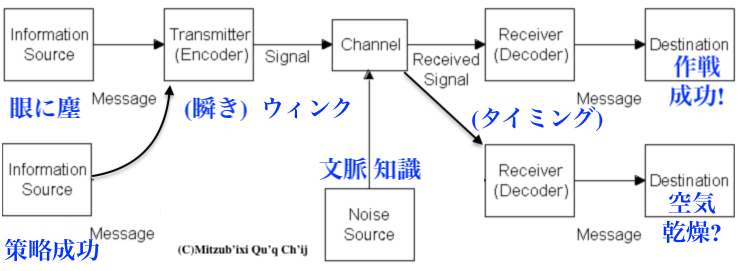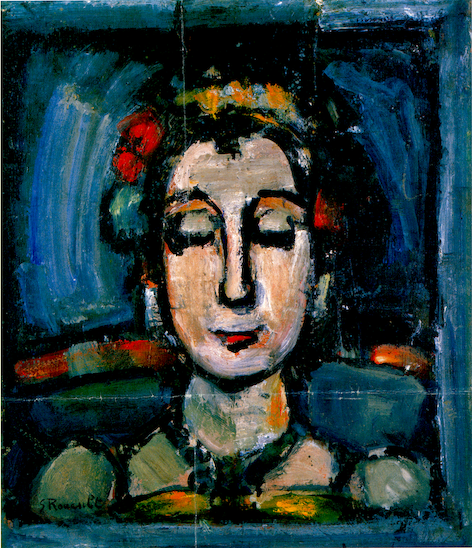ノンバーバルコミュニケーション
Non-Verbal Communication, ノン・ヴァーヴァル

ノンバーバルコミュニケーション
Non-Verbal Communication, ノン・ヴァーヴァル

言語によらない、非言語的コミュニケーションのことを、ノン・バーバル・コミュニケーション(ノンヴァーヴァルコミュニケーション)という。コミュニケーションは、 言語的過程により伝達されるという信念が、我々に強いので、言葉への信仰ゆえに、ノン・バーバル・コミュニケーションは、言語的(ヴァーヴァル)コミュニ ケーションの添え物として扱われがちであるが、ノン・バーバル的要素が意図的に省かれたりしたコミュニケーションのやり取りをすれば、意味が取りづらいこ とが多くある。そのため、バーバルなコミュニケーションの専門家である言語学者ですら、バーバル中心主義を批判する者が多い(西江 2017)。
西江雅之(2017)は、言葉以外に6つの要素が、ヒューマンコミュニケーションに必要であると次のように、その7つの要素を列挙している。
1)ことば、2)身体の動き、3)人物の特徴、4)空間と時間、5)環境、6)社会的な背景、7)生理的な反応、である。
ウィキペディアの解説を観てみよう!
"Nonverbal communication (NVC) is the nonlinguistic transmission of information through visual, auditory, tactile, and kinesthetic (physical) channels./ Nonverbal communication is the transmission of messages or signals through a nonverbal platform such as eye contact, facial expressions, gestures, posture, and the distance between two individuals. This form of communication is characterized by multiple channels and scholars argue that nonverbal communication can convey more meaning than verbal communication.[1] Some scholars state that most people trust forms of nonverbal communication over verbal communication. Ray Birdwhistell (1918-1994) concludes that nonverbal communication accounts for 60–70 percent of human communication,[2] although according to other researchers the communication type is not quantifiable[3] or does not reflect modern human communication, especially when people rely so much on written means.[4] The study of nonverbal communication started in 1872 with the publication of "The Expressions of the Emotions in Men and Animals" by Charles Darwin. Charles Darwin started to study nonverbal communication as he noticed the interactions between animals and realized they also communicated by gestures and expressions. For the first time, nonverbal communication was studied and its relevance questioned.[5]" - #Wiki.
"Photographs from the 1862 book Mécanisme de la Physionomie Humaine by Guillaume Duchenne. Through electric stimulation, he determined which muscles were responsible for different facial expressions. Charles Darwin would later republish some of these photographs in his own work on the subject, which compared facial expressions in humans to those in animals."
Masayuki Nishie,
1937-2015, Anthropologist/linguist. Nishie is one of the pioneers in
the areas of study on Creole and the languages Africa.
文化人類学者のクリフォード・ギアーツは「厚い記 述」という論文の中で、まばたきを例にして、コミュニケーションにおけるメッセージの 送受信におけるメッセージの解読過程について有名な議論をおこなっている。少年がこちらをみて、目配せとしてのウィンクした時には、我々はそれを彼がいた ずらを成功して、こちらに合図を送ったものとして解読することも できるし、他方で、ただたんに眼にゴミが入ったということも考えられる。このメッセージを正しく解読し、情報を〈共有〉するためには、メッセージの送り手 の少年と、それをみて二通り(あるいはそれ以上の可能性)の解釈をおこなう観察者である私の関係性や、それらがおこなわれた社会的文脈を考慮する必要があ るということだ。これもシャノンとウィーバーのいう、ある精神(マインド)が別の精神に影響を及ぼすということであり、その影響を与える要素(ノイズ)と して文脈を考えることだ。メッセージは多義的に解釈(解読)される可能性があり、また偶然の現象(眼にゴミが入る)と必然の現象(私と彼の間の関係や出来 事がおきた時の 状況からそのように判断できる)を、人類学者はさまざまな状況を手がかりに解釈しなければならない。それが、ギアーツのいうところの文化の理解にほかなら ない。文化人類学(解釈人類学)の観点からみて、人間コミュニケーションについての研究はまさに、文化についての研究にほかならないことを示している(→ 「コミュニケーション」)。

リンク(このサイトでノン・バーバル・コミュニケーションに触れてあるページ)
リンク(重要な研究者)
文献
その他の情報


